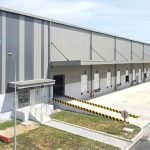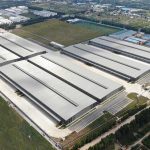Table of Contents
- 1 The Hidden Costs to Consider When Renting Factories in Vietnam: A Comprehensive Guide for 2025 and Beyond
- 1.1 1. Understanding Factory Rental in Vietnam: An Overview
- 1.2 2. Maintenance Fees: An Often Overlooked Expense
- 1.3 3. Utility Costs: Essential but Often Hidden Expenses
- 1.4 4. Security and Insurance Costs: Protecting Your Investment
- 1.5 5. Government Taxes and Fees: Navigating Local Regulations
- 1.6 6. Lease Terms and Flexibility: The Hidden Costs of Short-Term Agreements
- 1.7 7. Customization and Fitting Out Costs: Tailoring the Factory to Your Needs
- 1.8 8. Logistics and Transportation Costs: Assessing Access and Proximity
- 1.9 9. Labor Costs: The Hidden Expenses of Workforce Management
- 1.10 10. Legal and Compliance Fees: Navigating the Regulatory Environment
- 1.11 11. Market Fluctuations and Inflation: Managing Uncertainty in the Economy
- 1.12 Conclusion: Making Informed Decisions When Renting Factories in Vietnam
The Hidden Costs to Consider When Renting Factories in Vietnam: A Comprehensive Guide for 2025 and Beyond
Vietnam’s industrial real estate market is booming as businesses around the world seek to leverage its strategic location, competitive labor costs, and expanding infrastructure. Renting factories in Vietnam can be an attractive proposition, especially for manufacturers, investors, and multinational corporations. However, it’s crucial to look beyond the surface-level rental fees and understand the hidden costs involved. These often-overlooked expenses can significantly impact your budget, making it essential to factor in these costs when entering into a lease agreement for industrial property.
This guide will explore the many hidden costs associated with renting factories in Vietnam, offering valuable insights for businesses and investors. Whether you are setting up a new manufacturing unit, expanding your operations, or exploring factory rentals in key industrial zones, this article will help you avoid unexpected financial burdens.
1. Understanding Factory Rental in Vietnam: An Overview
Before diving into the specifics of hidden costs, it’s important to understand the context of factory rental in Vietnam. With rapid industrialization, the demand for industrial spaces—especially factories and warehouses—has surged. Cities like Ho Chi Minh City, Hanoi, Binh Duong, and Hai Phong are popular industrial hubs, offering easy access to transportation, labor, and key markets.
Rental rates for industrial properties in Vietnam can vary widely depending on location, property type, and the level of services provided. While the base rent is usually the most apparent cost, businesses often overlook additional expenses that can add up over time. These hidden costs can range from maintenance fees to utility charges and legal obligations.
2. Maintenance Fees: An Often Overlooked Expense
One of the most significant hidden costs when renting a factory in Vietnam is property maintenance. Many landlords require tenants to cover ongoing maintenance costs, which can include everything from general upkeep to repairs of HVAC systems, plumbing, electrical systems, and even structural maintenance.
-
Routine Maintenance: Depending on your lease terms, the responsibility for regular maintenance might fall on you, the tenant. This could mean paying for minor repairs, facility upkeep, and maintaining the factory’s machinery and equipment.
-
Unexpected Repairs: Even if the landlord handles the primary maintenance, unforeseen repairs—such as broken machinery or structural damage—could add unexpected expenses.
3. Utility Costs: Essential but Often Hidden Expenses
Utilities such as water, electricity, and waste disposal are essential for running a factory. However, these costs can be much higher than anticipated, especially in industries with high-energy demands.
-
Electricity: Vietnam’s energy consumption costs can fluctuate, and many industrial properties charge tenants based on usage. Manufacturing processes that involve heavy machinery or climate control systems can lead to significant electricity costs.
-
Water and Waste Disposal: For factories that require substantial water usage (such as those involved in textiles or food processing), water bills can be substantial. Additionally, waste disposal services are often charged separately, adding another layer of cost.
-
Gas: If your factory uses natural gas for heating or other processes, this cost must also be factored in, as it’s typically billed separately.
4. Security and Insurance Costs: Protecting Your Investment
Ensuring the security of your factory premises and protecting against potential risks are often overlooked costs when renting industrial spaces.
-
Private Security: While many industrial parks in Vietnam provide basic security services, in some cases, you may need to hire additional private security personnel for surveillance, guarding, and monitoring.
-
Insurance: Factory rental agreements typically require tenants to carry both property and liability insurance. This cost can vary based on the value of the machinery, inventory, and raw materials in the facility. Insuring against theft, fire, natural disasters, and accidents is crucial but can be a significant financial commitment.
The Vietnamese government imposes several taxes and fees on businesses operating in the country, and as a tenant of a factory, you may be liable for these expenses.
-
Property Taxes: Property taxes in Vietnam are typically paid by the landlord but may be passed on to tenants depending on the lease agreement. It’s essential to clarify who will bear these costs during contract negotiations.
-
Value-Added Tax (VAT): Rental payments for industrial properties in Vietnam are subject to a 10% VAT, which adds to the cost of leasing a factory. While this tax may seem minor, it can accumulate over time, especially for long-term leases.
-
Environmental Compliance Costs: Depending on the type of business, you may be required to pay for environmental impact assessments, pollution control, waste management, or specific permits. Environmental regulations are becoming stricter, particularly for industries that have a direct impact on the environment.
6. Lease Terms and Flexibility: The Hidden Costs of Short-Term Agreements
When renting a factory, businesses must carefully consider the terms of the lease agreement. Long-term leases are common in Vietnam’s industrial real estate market, but short-term leases can sometimes be appealing for companies looking for flexibility. However, these short-term agreements come with their own hidden costs.
-
Short-Term Lease Penalties: Landlords may charge a premium for shorter-term leases to offset potential vacancies and ensure that their properties remain fully occupied. Short-term leases can also come with stricter renewal terms, escalating rent clauses, and other financial penalties.
-
Escalating Rent: Many industrial leases include an escalation clause that allows landlords to raise rent over time, typically based on inflation or market conditions. This can lead to higher rental costs as the years progress, so it’s important to factor in these potential increases into your long-term budget.
7. Customization and Fitting Out Costs: Tailoring the Factory to Your Needs
Depending on the nature of your business, you may need to customize or fit out the factory space to meet specific operational needs. This can lead to additional, often hidden, costs that should be considered when negotiating a lease.
-
Factory Modifications: You may need to modify the factory’s layout, install new equipment, reinforce the structure, or upgrade utilities to meet your operational requirements. These customization costs can add up quickly, particularly for factories in older industrial parks.
-
Equipment and Machinery: If you are renting a factory with little to no equipment, you’ll need to purchase or rent machinery and office furniture, which will add to your initial investment. Equipment leasing and installation can significantly increase your upfront costs.
8. Logistics and Transportation Costs: Assessing Access and Proximity
The location of your factory plays a key role in determining the logistics and transportation costs. While renting a factory near key ports, airports, or highways may seem convenient, there are hidden logistical costs that need to be taken into account.
-
Transportation: If your factory is in a less accessible area, transportation costs (fuel, driver wages, and vehicle maintenance) can add up. Consider the proximity of your factory to key transportation hubs and plan for the associated costs of moving goods and materials to and from the site.
-
Inventory and Storage: In addition to the factory space itself, businesses may need to rent additional warehouse space for storing raw materials, finished products, or inventory. These additional storage costs should be factored into the overall budget.
9. Labor Costs: The Hidden Expenses of Workforce Management
Vietnam offers a relatively affordable labor force, but businesses should still account for the hidden costs associated with hiring and managing employees.
-
Recruitment and Training: If your business requires specific skill sets, recruitment and training costs can add up quickly. Even with a steady labor pool, the cost of hiring qualified workers and training them to meet your standards should be factored in.
-
Severance and Legal Fees: Vietnam has strict labor laws, and businesses must follow local regulations regarding employee rights, contracts, and severance pay. Any violations or legal disputes could result in costly legal fees or severance payments.
The legal landscape in Vietnam can be complex, and businesses often incur additional costs for ensuring compliance with local laws.
-
Legal Fees: When signing a lease agreement or dealing with any disputes, it’s advisable to consult with a local lawyer. Legal services in Vietnam can be costly, especially if there are issues with lease contracts or government regulations.
-
Licensing and Permits: Depending on the industry, you may need specific licenses, certifications, or operating permits to run your factory legally. These licensing costs can vary depending on the type of business and the location of the factory.
11. Market Fluctuations and Inflation: Managing Uncertainty in the Economy
Market conditions, inflation rates, and currency fluctuations can also impact the cost of renting a factory in Vietnam.
-
Currency Exchange Rates: For foreign businesses, fluctuations in the exchange rate between the Vietnamese dong and your home currency can affect the real cost of leasing a factory.
-
Inflation: Inflation can lead to increased costs for materials, utilities, and labor, even if these costs are not directly tied to the lease. Businesses must prepare for potential price hikes and factor them into their budget.
Conclusion: Making Informed Decisions When Renting Factories in Vietnam
Renting a factory in Vietnam offers substantial growth opportunities, but it’s essential to fully understand the hidden costs involved. By carefully considering the various expenses—such as maintenance fees, utility costs, taxes, and logistical challenges—businesses can make informed decisions that align with their budget and long-term objectives. Thoroughly reviewing lease agreements, negotiating terms, and working with experienced local professionals can help mitigate these hidden costs, ultimately leading to a more profitable investment in Vietnam’s thriving industrial real estate market.
For detailed inquiries and site visits, contact Lusac Real today!
📞 Phone: +84-903-009-609
📧 Email: [email protected]
🌐 Website: https://www.lusacreal.com/



